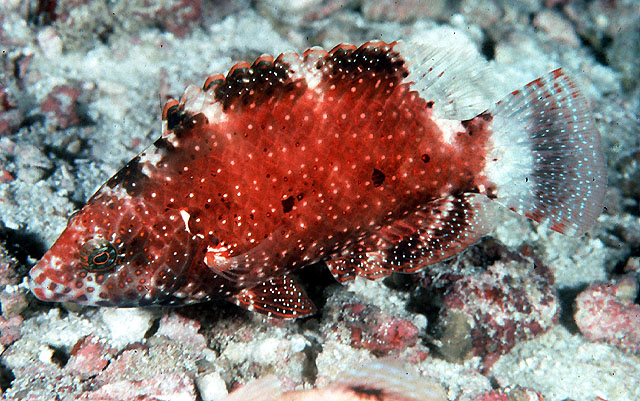| Labridae (Wrasses), subfamily: Cheilininae |
| 45 cm TL (male/unsexed) |
|
reef-associated; marine; depth range 1 - 30 m |
| Indo-Pacific: East Africa to the Marquesan and Tuamoto islands, north to the Ryukyu Islands, south to New Caledonia and Rapa. |
|
Dorsal spines (total): 10-10; Dorsal soft rays (total): 8-9; Anal spines: 3-3; Anal soft rays: 8-8. The only Cheilinus that has 10 dorsal spines. Exhibits a coloration very similar to C. trilobatus, but has black and white specks on its pelvic, anal and caudal fins, while C. trilobatus has vertical red, white and black streaks on its body scales. Large adults of both species have numerous red spots and streaks on the head and trilobed caudal fins. |
| Adults inhabit lagoon and coastal reefs, in areas with mixed sand, rubble, and coral (Ref. 9710). Occasionally in grassy areas. Feed mainly on benthic invertebrates such as mollusks and crustaceans. Oviparous, distinct pairing during breeding (Ref. 205). |
|
Least Concern (LC); Date assessed: 12 July 2008 Ref. (130435)
|
| harmless |
Source and more info: www.fishbase.org. For personal, classroom, and other internal use only. Not for publication.

